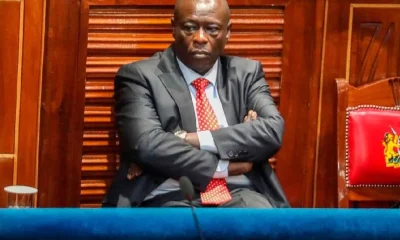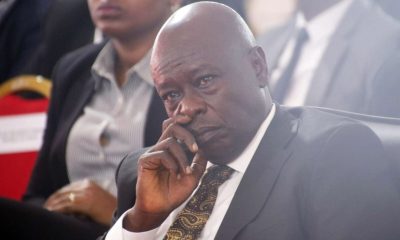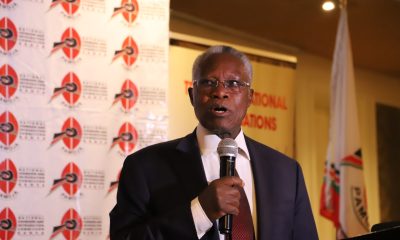Opinion
The Clarion Call Of “One Man, One Shilling” By Kenya’s Deputy President, Rigathi Gachagua
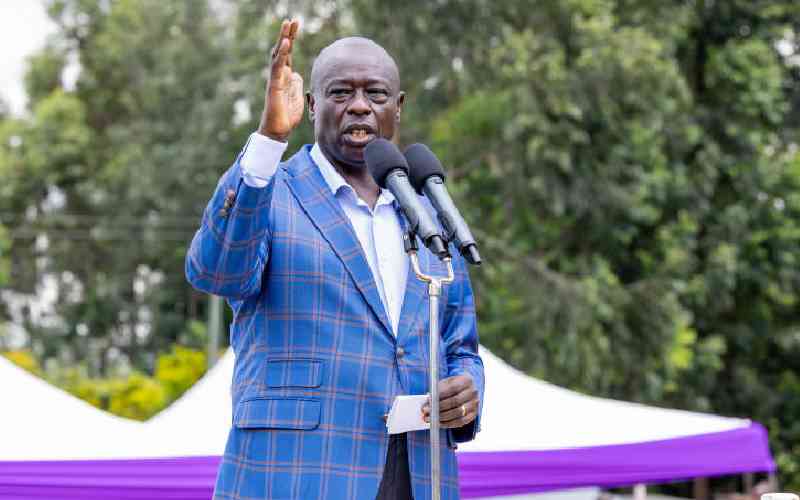
By Michael Mundia Kamau
Kenya’s Deputy President, Rigathi Gachagua, should extend his ongoing advocacy for “One Man, One Shilling” to land reform in Kenya, inspired by what happened in the United States of America towards the end of the Civil War in 1865.
Slavery was abolished in America in 1865 by America’s 16th President, Abraham Lincoln, following which one of Abraham Lincoln’s Army Generals, Gen. William Sherman, passed an ordinance into American law back then, known as “40 acres and a mule,” where each freed slave was to be allocated 40 acres of land, and a mule (a donkey), to start life as free men and free women.
“40 acres and a mule” was however short lived. Abraham Lincoln was assassinated on 15th April 1865, following which America’s 17th President, Andrew Johnson, revoked “40 acres and a mule,” towards the end of the year 1865.
“40 acres and a mule,” was not however a bad idea. Mules are not key in ploughing land in Kenya, so were something on the lines of “40 acres and a mule” to be considered in Kenya, it would be more on the lines of “40 acres and an ox,” “40 acres and a camel,” or “40 acres and a boat.”
The size of Kenya is approximately 580,000 square kilometres (about 143,321,121 acres), and out of this about 143,321,121 acres, some different families, different individuals and different organisations own different parcels of land as big as 100,000 acres.
Kenya is much smaller than the United States of America, and to all intents and purposes, the United States of America is more than just a country, is a continent, with the time difference between the west coast of the United States of America, and the east coast of the United States of America, being three hours, the very same time difference between West Africa and East Africa.
Kenya’s population currently stands at about 45 million, and with Kenya’s approximate size in acreage of 143,321,121 million, then “40 acres and a mule,” in Kenya, in the year 2024, would translate to about three acres of land per Kenyan citizen.
However, about 60% of Kenya’s current population, is below the age of 18 years, so the equivalent of “40 acres and a mule,” in Kenya, would focus on the population of Kenya above the age of 18 years, an approximate current population of 18,000,000, which would therefore bring Kenya’s current approximate equivalent of “40 acres and a mule,” to “8 acres and a mule.”
![Deputy President Rigathi Gachagua arrives in Nakuru for the annual Akurino faithful Prayer Conference at Nakuru Boys' High School. [DPCS]](https://kenyainsights.com/wp-content/uploads/2024/06/60E12B75-55B7-4E39-926E-E5E3751B4B4D-300x214.jpeg)
Deputy President Rigathi Gachagua arrives in Nakuru for the annual Akurino faithful Prayer Conference at Nakuru Boys’ High School. [DPCS]
Waweru Mburu (RIP), was a broadcaster with Kenya’s Royal Media Services/Radio Citizen Kenya, and around the mid-2000s, Waweru Mburu had a popular evening radio show on Radio Citizen Kenya, popular across Kenya back then, where Waweru Mburu regularly used the Kiswahili catchphrase:
“Kabila Kenya ni mbili tu… tajiri na maskini” (“There are only two tribes in Kenya… the rich and the poor”).
Was Waweru Mburu (RIP) right? Do Waweru Mburu’s words hold true today in Kenya in the year 2024?
Before 1964, the United Republic of Tanzania was two separate countries, Tanganyika and Zanzibar.
Julius Kambarage Nyerere (1922 to 1999), was Prime Minister of Tanganyika from 1961 to 1962, was President of Tanganyika from 1962 to 1964, and was President of the United Republic of Tanzania from 1964 to 1985.
In 1967, the United Republic of Tanzania adopted “Ujamaa” (“Socialism”), in what is known as “Azimio la Arusha” (“The Arusha Declaration”). “Ujamaa” (“Socialism”), was in place in the United Republic of Tanzania for 18 years, that is, from 1967 to 1985, after which the United Republic of Tanzania reverted back to free market policies/Capitalism.
When “Ujamaa” was at it’s peak in the United Republic of Tanzania, Julius Kambarage Nyerere had a catchphrase in Kiswahili that went:
“Ujamaa ni utu, Ubepari ni unyonyaji na uhasama” (“Socialism is human, Capitalism is exploitation and barbaric”).
As a matter of fact, during “Ujamaa” (“Socialism”) in the United Republic of Tanzania, the evening news on Tanzanian radio (there was only one radio station in Tanzania in those days), would begin with a lion roaring, the significance being that the roaring lion was “Capitalism,” that needed to be “defeated.”
Was Julius Kambarage Nyerere’s take on “Socialism vs. Capitalism,” right or wrong?
Do the words of Julius Kambarage Nyerere on “Socialism vs. Capitalism,” hold true in Capitalist countries around the world today in the year 2024, including Kenya?
Don’t the words of Julius Kambarage Nyerere, Waweru Mburu, and “40 acres and a mule,” point to the same thing, that is, a more equitable and egalitarian society?
On the 27th of April 1965, the Government of Kenya’s 1st President, Mzee Jomo Kenyatta, unveiled and launched what is known as “Sessional Paper No. 10 of 1965 on African Socialism,” which in Mzee Jomo Kenyatta’s words, was a “blend of Eastern Communism and Western Capitalism, in equal measure.”
Has Mzee Jomo Kenyatta’s “Sessional Paper No. 10 of 1965 on African Socialism” lived up to expectations? It appears not.
The current Secretary-General of the Communist Party of Kenya, is a gentleman called Mwandawiro Mghanga, a former Member of Parliament for Wundanyi constituency, and a former Chairman of the Students Organisation of Nairobi University (SONU).
Mwandawiro Mghanga was a radical who was expelled from the University of Nairobi for his radicalism and activism. For example, 39 years ago on 11th February 1985, when Mwandawiro Mghanga was Chairman of the Students Organisation of Nairobi University (SONU), he committed the treasonable act of “Inspecting a Guard of Honour,” in an act of defiance and radicalism, similar to the “Black Power” salutes made by Americans, Tommie Smith and John Carlos, at the 1968 Mexico Olympic Games.
Mwandawiro Mghanga was imprisoned for his activism, and upon his release from prison, spent much of the remainder of the 1980s, and a part of the 1990s, in exile in Sweden.
Mwandawiro Mghanga is much less a radical person nowadays, though as mentioned, he is nowadays the Secretary-General of the Communist Party of Kenya.
Where have we gone wrong as a country and as a people?
Does Kenya need to take another look at Mzee Jomo Kenyatta’s “Sessional Paper No. 10 of 1965 on African Socialism?”
Does Kenya need the likes of Mwandawiro Mghanga and the Communist Party of Kenya to help draw up and design a more equitable and egalitarian blueprint on Kenya’s short term and long term socioeconomic growth and development?
Does Kenya need to take a look at the United Republic of Tanzania’s “Azimio la Arusha” (“The Arusha Declaration”) of 1967, on “Ujamaa” (“Socialism”)?
Does Kenya need to take a look at the 1865 ordinance of American Army General, Gen. William Sherman, titled “40 acres and a mule?”
Over to you, Deputy President, Rigathi Gachagua.
Kenya Insights allows guest blogging, if you want to be published on Kenya’s most authoritative and accurate blog, have an expose, news TIPS, story angles, human interest stories, drop us an email on [email protected] or via Telegram
-

 Business6 days ago
Business6 days ago‘They’re Criminals,’ Popular Radio Presenter Rapcha The Sayantist Accuses Electric Bike Firm Spiro of Fraudulent Practices
-
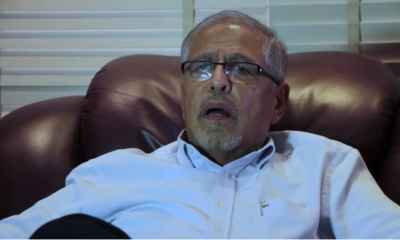
 News1 week ago
News1 week agoTemporary Reprieve As Mohamed Jaffer Wins Mombasa Land Compensation Despite Losing LPG Monopoly and Bitter Fallout With Johos
-

 Investigations1 week ago
Investigations1 week agoFrom Daily Bribes to Billions Frozen: The Jambopay Empire Crumbles as CEO Danson Muchemi’s Scandal-Plagued Past Catches Up
-

 Sports1 week ago
Sports1 week ago1Win Games 2025: Ultimate Overview of Popular Casino, Sports & Live Games
-

 Investigations7 days ago
Investigations7 days agoDisgraced Kuscco Boss Arnold Munene Moves To Gag Media After Expose Linking Him To Alleged Sh1.7 Billion Fraud
-

 Business4 days ago
Business4 days agoIt’s a Carbon Trading Firm: What Kenyans Need to Know About Spiro’s Business Model Amid Damning Allegations of Predatory Lending
-

 Business1 week ago
Business1 week agoHass Petroleum Empire Faces Collapse as Court Greenlights KSh 1.2 Billion Property Auction
-

 Business3 days ago
Business3 days agoManager Flees Safaricom-Linked Sacco As Fears Of Investors Losing Savings Becomes Imminent

